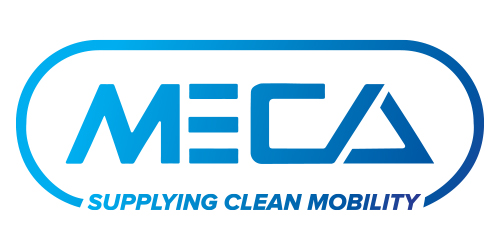Regulatory Background on the U.S. Mobile Source Emission Control Program
- Mobile Source Regulatory Comparison: U.S. EPA/California vs. European Union
- U.S. EPA Tier 3 and California ARB LEV III Rulemakings
- U.S. EPA Clean Air Nonroad Diesel Rule
- U.S. EPA 2007/2010 Heavy-Duty Engine and Vehicle Standards and Highway Diesel Fuel Sulfur Control Requirements
- U.S. EPA Light-Duty Tier 2 and Gasoline Sulfur Rulemaking
- The California Air Resources Board
- The U.S. Environmental Protection Agency's Motor Vehicle Compliance Program
- The Clean Air Act
Mobile Source Regulatory Comparison: U.S. EPA/California vs. European Union
| Regulatory Program | U.S. EPA/California | European Union |
|
Fuels |
15 ppm sulfur limit for diesel; moving to 10 ppm sulfur average for gasoline |
10 ppm sulfur limits for both gasoline and diesel |
|
Light-Duty Vehicles |
Very stringent limits for HC, CO, NOx (full useful life out to 240K km) |
Stringent standards for HC, CO, NOx (full useful life out to 160K km) |
|
|
Fuel neutral standards started with EPA NLEV, Tier 2, and CARB LEV I |
Different standards for gasoline and diesel vehicles (less stringent for diesel vehicles) |
|
|
Same emission limits for light-duty vehicles through 4545 kg GVW with fleet average compliance flexibility |
Different emission limits for different weight classes of light-duty vehicles; no fleet averaging |
|
|
Stringent mass-based standards for particle emissions (CA LEV III has most stringent PM limits) |
Very stringent number-based standards for particles (diesel with Euro 5 and GDI with Euro 6c) |
|
|
Very stringent evaporative emission standards and limits capture all sources of VOC losses, including refueling losses (ORVR), running losses, multiple-day parking events, and permeation; plus minimize short-term parking emissions |
Evaporative standards only capture short-term diurnal VOC losses |
|
|
Multiple test cycles designed to capture real vehicle driving |
Current test cycle not effective at capturing real-world driving emissions; adding real-world focus to Euro 6c; eventually moving to WLTP cycle |
|
|
Long history/experience with compliance programs to ensure emission reductions are delivered for in-use vehicles; recall authority to resolve chronic emission problems |
No structured compliance effort; no recall authority; real-world driving includes in-service compliance component |
|
|
GHG limits based on vehicle footprint |
GHG limits based on vehicle mass |
|
Motorcycles |
Large differences between motorcycle and car emission limits; includes diurnal evaporative emission limit |
Stringent future standards in place that close the gap between motorcycle and car emission limits; future standards include diurnal evaporative emission limit |
|
Heavy-Duty Vehicles |
Stringent limits for HC, CO, NOx |
Stringent limits for HC, CO, NOx |
|
|
Stringent mass-based standards for particle emissions |
Very stringent number-based standard for particles (Euro VI diesel) |
|
|
Transient cycle includes cold and hot starts; NTE limits |
Moved to WHTC transient cycle with cold and hot starts with Euro VI; NTE limits |
|
|
In-use compliance program using PEMS started with 2007 limits; focused on NTE events – with engine map carve outs; recall authority |
In-use compliance program using PEMS started with Euro VI; focused on WHTC work-based window – no engine map carve outs; no recall authority |
|
|
GHG limits introduced for 2014 |
No GHG standards; will begin monitoring program |
|
Off-Road Diesel Engines |
Largely harmonized limits for HC, CO, NOx, and PM, but covers wider range of engine power ratings |
Largely harmonized limits for HC,CO, NOx, and PM, but no limits for small and very large diesel engines |
|
|
Transient and steady-state test cycles (harmonized) |
Transient and steady-state test cycles (harmonized) |
|
|
No activity currently focused on developing a Tier V proposal but continued harmonization in this sector could cause movement toward the Euro Stage V proposal |
Stage V proposal released that includes PN limit for 19-560 kW engines, railcar engines, and inland marine engines 300 kW and larger; Stage V proposal also includes emission limit on small and large nonroad engines |
|
|
No in-use testing currently required; EPA surveillance testing with recall authority is available in this sector |
Stage V proposal includes an undefined, in-use emissions testing requirement |
